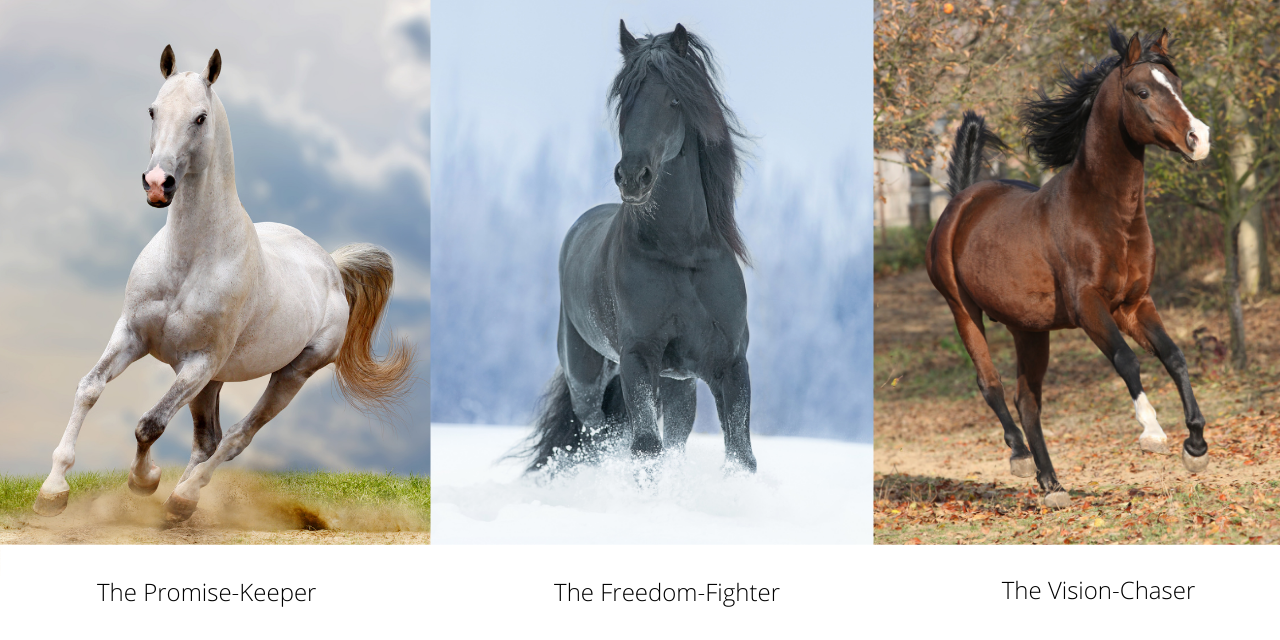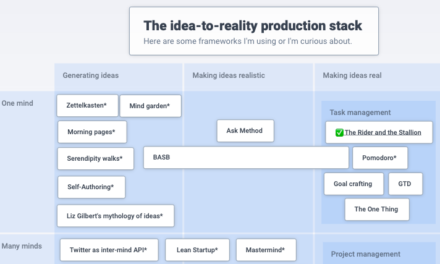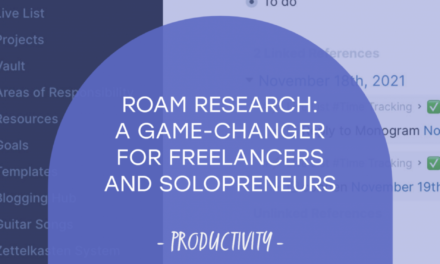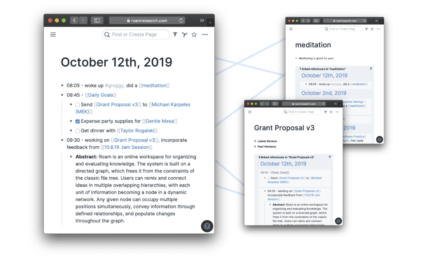This is Chapter 12 of Professional Management with Roam v1.0. Page and block references have been removed or replaced with links to web pages, and indentation has been flattened. Due to this, there are references to the Stallion and Rider model throughout the chapter but the explanation is only found at the latter part of it.
Chapter distillation:
– GTD does not work for everyone
– Project management is about shot selection—at the project level and task level
– We run fastest when our work is both meaningful to the Rider and exciting to the Stallion.
Project management tells us how to bring ideas to reality. All project management tools ultimately lead to the Work Breakdown Structure (WBS): the work needed to bring an idea to reality. Through leadership, you orchestrate the work of your project team. Whether you work solo, contribute to executing the WBS or you are a full-time project manager, you need to get work done yourself.
Task management or productivity is the craft of getting your work done. In the context of project management, productivity is the craft of getting the work packages you own done.
An alternative to GTD
All the tools and frameworks in this rBook have gone through two filters: I got them from a community’s best practices (mostly from the PMBOK) and I’ve used them myself. This chapter is an exception. Today’s prevailing task management methodology is Getting Things Done (GTD), as presented in the book of the same name by David Allen. Even Tiago Forte’s Building a Second Brain (BASB) is built on ideas from GTD.
GTD doesn’t work for me. I didn’t even get to the point of trying GTD out because the system just didn’t make sense to me. I had to come up with something else.
In this chapter, I share the productivity system that worked for me. I call it Project-driven Stallion/Rider Productivity. It has 5 steps:
- Choose your projects
- Manage your projects
- Create your menu
- Choose the day
- Choose the pomodoro
This 5-step process is underpinned by the following principles:
- Productivity is less about volume of work, and more about shot selection
- The job of the manager is to design the environment, not to tell the maker what to do
- The mind rests on the brain, the brain rests on the body
This productivity system was built through trial-and-error. Below, after I present the 5 steps, I explore why this system works for me, which may help you decide if it is right for you as well.
Project-driven Stallion/Rider Productivity in 5 Steps
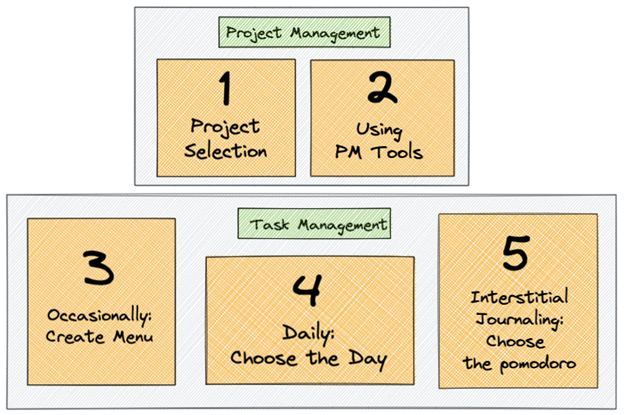
The key idea is that you have a choice of to-dos from each of your projects. Most times, it doesn’t matter which to-do you work on today. If you choose ones which attract your Stallion, you’ll run faster.
1. Choose your projects
What projects could bring you to your desired future?
There are systematic ways of laying the foundations of choosing your future: Future Authoring, Goal-Crafting Workshops or creating a GTD Purpose and Principles page.
What these practices miss is the power of listening to inspiration. If we limit our projects to those that we could rationalize, we miss out on so many adventures and so much good fortune. Liz Gilbert’s mythology of ideas is what helped me become a better listener to inspiration.
Seeing our purpose and choosing our pathways towards our desired future is not a one-time event. We need to nourish our minds with meaning, the way we need to nourish our bodies with food.
This is why I take every opportunity to tell my origin story and what I’m working towards. My Rider and my Stallion are my main audience.
A lot of us have a daily practice of meditation. Whatever your meditation style is, that time of reflection is also a good moment to reinforce the meaning of our projects, to be open to new ones, and to decide to close current ones.
Aside from daily meditation, I also do a monthly recollection of a few hours and a yearly retreat of a few days. These allow me to go deeper into envisioning, circumspection and making choices.
Project Choices Expressed in Roam
The act of choosing projects is expressed as a Roam template which lists down links to my project pages. We will use this template for Step 3.
Tips for Roam beginners on creating Roam templates:
- Instead of creating templates in the roam/templates page, create them in some other page (eg, Today’s Daily Note) and indent them under linked references that serve as tags or categories for the template. Once you have dozens of templates, it will be easier to find and update them under the linked references of roam/templates, by using those tags or categories as filters. Here’s an example:
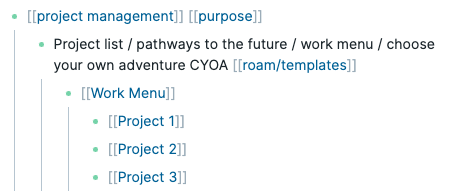
- I also find it useful to give the template a name that captures multiple possible names my future self could use for this list, so that when I need to summon it (;;), I have multiple pathways to recall it. For instance, “Project list / pathways to the future / work menu / choose your own adventure CYOA [[roam/templates]]” in the example above.
- I arrange projects in the template in terms of priority.
- As needed (eg, when making a decision during a meditation, recollection or retreat), I add or delete a project in the template, or rearrange the order of the list.
2. Manage your projects
For each project, decide whether you need to use project management tools. Then choose which among them are most appropriate for your projects. Like most things, choosing the appropriate tools will get easier the more projects you manage. Here’s how I think about this:
- If the project is large and important enough and requires the orchestration of work (vs consistent deep work), create a WBS, RBS and a Risk Register for it.
- If others are involved in the project or it takes a long time (ie, you’ll need to coordinate with your future selves), create a project charter.
- Use the other tools as necessary.
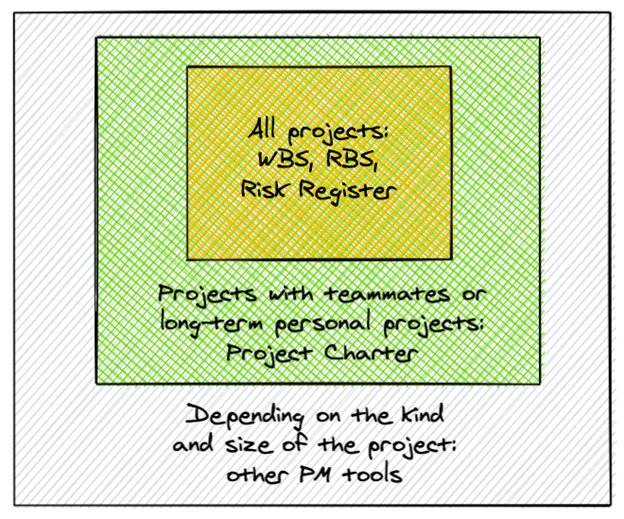 3. Create your menu
3. Create your menu
This is a list of tasks indented under their project pages. You can use your template of projects to create this. This is not a to-do list. This is more of choose-your-own-adventure paths for the upcoming work cycle (a few days to a few weeks). Here’s an example.
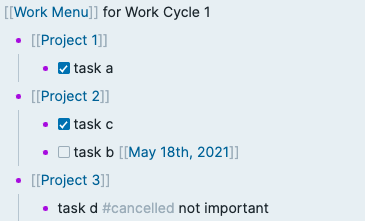
In Roam
- Use the template you created in Step 1 (type ;; and keywords in your template name)
- For projects with a WBS, I option/alt-drag blocks from the WBS to indented blocks under the project names.
- For tasks that need to be done on specific days, I tag a date so that it will appear in my linked references on that day.
- There is no need to put tasks under all the projects. I delete the empty project linked references in this case. They are low priority for that work cycle.
- I add tasks as needed.
- I pin this menu in my sidebar until I replace it with the next one. I block reference the original task if I carry a task into the next work cycle. In the example below, task b under Project 2 is a block reference from the menu above. Always reference the original block (avoid block ref of a block ref of a block ref). This allows you to create a report of time spent per task if you use pomodoro.
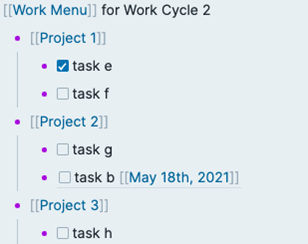
- I create a new menu when the current one becomes overwhelming. A menu normally lasts a few weeks for me.
- If you like using queries, you can create a list for each project using [[TODO]] the project name and dates or a tag that indicates the task should be in the current work cycle. For example:
- {{[[query]]: {and: [[Project 2]] [[TODO]] {between: {[[May 1st, 2021]] [[May 30th, 2021]]}}}}}
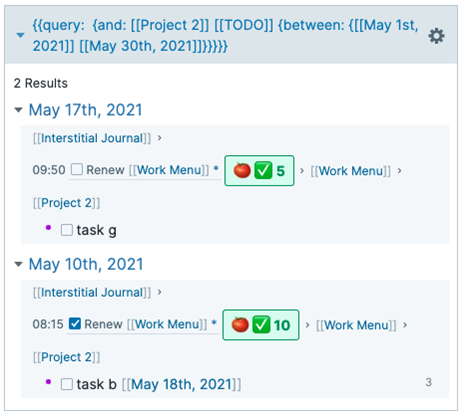
4. Choose the day
My Daily Notes Pages has two top level blocks:
- [[Interstitial Journal]]
- [[TODO Today]]
At the beginning of the day, during my morning meditation, I block reference tasks under [[TODO Today]] (always using the original block) or I add new tasks.
Examples of questions that help me fill this out:
- [[Top TODO for work]]
- [[Top TODO for friends and family]]
- [[Top TODO for habit building]]
This list of questions are in a roam/template I use for my meditation. If you have a spiritual practice, you can also ask questions from that perspective. I share my practice here.
5. Choose the pomodoro
A key principle in the Stallion/Rider model is that we run fastest when our work is both meaningful to the Rider and exciting to the Stallion. If we had chosen projects aligned to our purpose, any task in our menu should fulfill the first criterion. We just need to listen to our Stallion to fulfill the second.
To me, this choice is expressed as a pomodoro block indented under [[Interstitial Journal]]. My format is <current time> <block reference to the original task> <pomodoro timer>. For example:
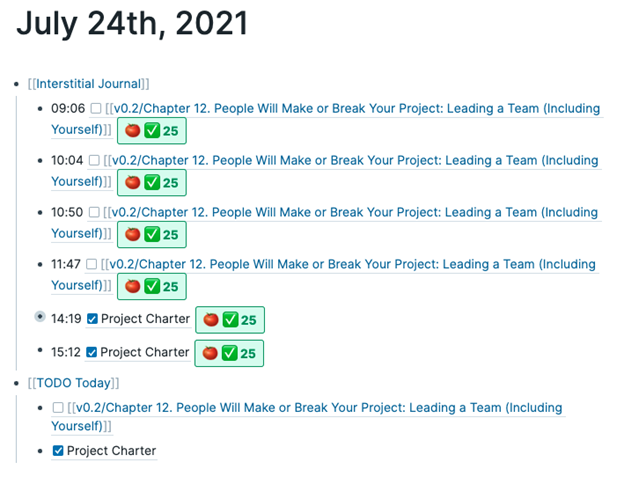
The image above is how a Daily Notes Page looks like for the graph I use for writing about project management and preparing for project management training. My main graph has more diverse types of tasks.
If you like to keep your Daily Notes Pages clean, you can indent the task and the pomodoro under the time so you can collapse them. The important thing is to place the pomodoro timer beside or as a parent of the task block, if you want to track the time you spend on tasks. If we click on one of the pomodoro blocks shown in screenshot above, we would see this in the linked references for that block:
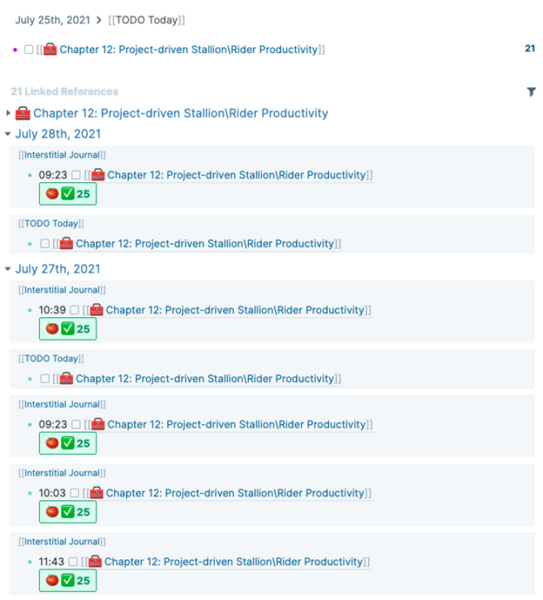
Tip: Filter with [[POMO]] if there are a lot of non-pomodoro usages of the block.
Pomodoros are just guides. If I’m in the flow, I skip the breaks. If I’m stuck, the breaks give me a chance to reset.
Here’s a more detailed visualization of the workflow:
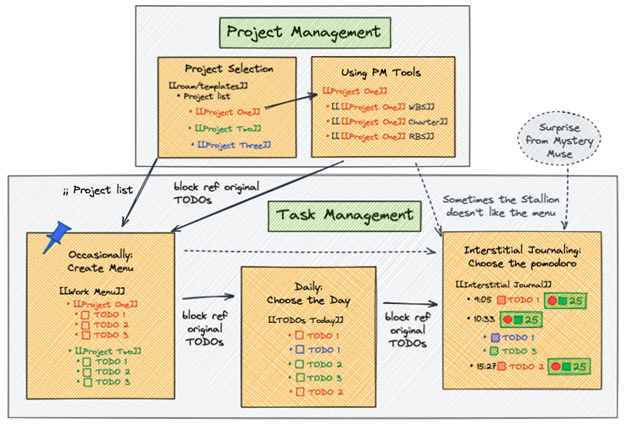
Principles underpinning Project-Driven Stallion\Rider Productivity
Productivity is less about volume of work, and more about shot selection
A key principle in both GTD and BASB is the capture habit. The pathological execution of this principle is to capture and do as many tasks as possible. If we look at the bigger picture of our lives, we will see that we should throw out or neglect tasks, rather than capture more of them. Our ideas are limited only by our minds. Bringing them to reality is limited by the amount of time we have. We have much less time than ideas.
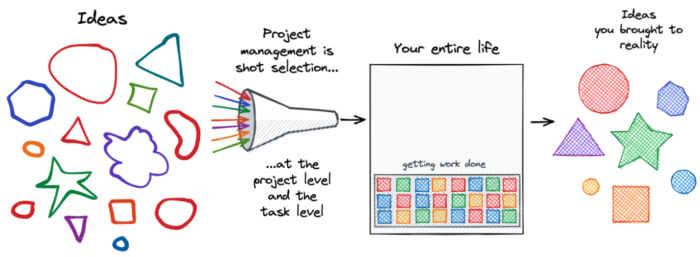
In the sport of boxing, there is the concept of “shot selection.” Winning is not primarily about the volume and the power of your punches. Before those come into play, you need to pick your punches and hit your opponent.
Bringing ideas to reality is also fundamentally about shot selection. We only have a few decades to live. On each day of those decades, we only have a few pomodoros. We cannot increase our time. However, we can take better shots.
The project management tools presented in this rBook is ultimately about shot selection. Which work packages in your WBS are the 80/20 for the project? Which are the highest scoring risks in your Risk Register?
At a higher level, we need to choose projects that are aligned to our life’s purpose.
The job of the manager is to design the environment, not to tell the maker what to do
In most of human history, the master gives a list of tasks and the slave does them. As we have seen in the previous chapter, this is not ideal for leading free and educated people.
We should also avoid being taskmasters of our future selves, creating a list of tasks that we force ourselves to do at the appointed time. Instead, we can serve our future selves by designing the environment. When we are in manager mode, we make use of these project management tools to give our maker-selves a hand-selected menu of options.
The manager trusts the maker to select the best tasks at the moment of work. The maker trusts that the manager did the work of project and task selection.
Developing the mental muscle of discipline is good. Discipline becomes a problem if it is our only tool for getting things done.
We need to enable shot selection at the moment of work because we run fastest when our work is both meaningful to the Rider and exciting to the Stallion.
The mind rests on the brain, the brain rests on the body
There is a selection bias in documented productivity systems. Those who write books tend to be believers in solving problems with the mind. I was also like this. The question of how to be more productive tends to get answered with processes and techniques.
The image of Stallion/Rider reminds us that the power of the Stallion depends on its health. In concrete terms, this means that we need to spend as much time taking care of our sleep, exercise and nutrition, as we spend on getting better at project and task management.
The Rider also needs to be healthy: it needs purpose, friendship and virtue the way the Stallion needs rest, play and food.
The Stallion/Rider Model and The Three Stallions
“How do you sustain your enthusiasm for a project?” A participant asked me this question in one project training I did.
I answered based on my experience of burn-out and overcoming it. In the past, my solution was to make my work more meaningful, mainly by writing about it (here’s an example). I realize now that this solution is incomplete. My bias was to solve problems with reason, probably because of my upbringing. I did not yet see the power of emotion in motivation.
I know now that to truly motivate ourselves (and other people), we must address two kinds of needs:
- The needs of reason: meaning and purpose.
- The needs of emotion: status, camaraderie, recognition, adventure, novelty, etc.
This ties-in well with the System 1 / System 2 model of decision-making presented in Daniel Kahneman’s “Thinking, Fast and Slow.”
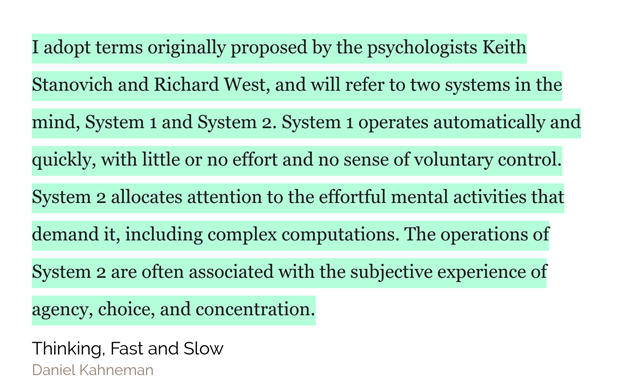
I considered different ways to visualize this, and ended up with the Stallion representing emotion and the Rider representing reason. It turns out the ancient Greeks used this imagery as well*. It is tried-and-tested.
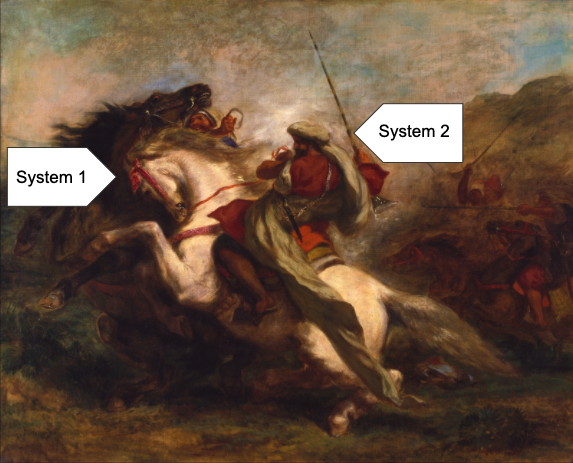
Original painting: Collision of Moorish Horsemen by Eugène Delacroix (1789 – 1863)
The Three Stallions
GTD clearly works for some people. Why does it work for them and not for me and presumably many others?
Is personality the answer? To explore this, I looked at the most popular ways of slicing the pie of personality: OCEAN, MBTI, Strengthsfinder, DISC, Kolbe A, and Enneagram.
Some of these helped me understand my Stallion better. However, I found them too complex for day-to-day use of influencing motivation. The model I found useful for this purpose was Gretchen Rubin’s Four Tendencies, as presented in her book of the same name.
Rubin’s model is a 2×2 answering these two questions:
- Do you embrace or rebel against external expectations?
- Do you embrace or rebel against internal expectations?
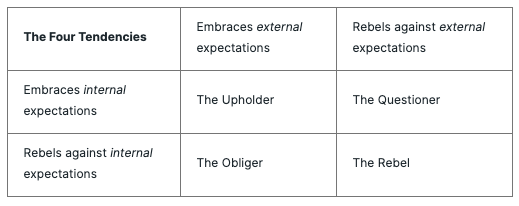
I see three problems with this model.
- First is the naming. Most of the people I’ve explained this to want to be Rebels, and no one wants to be an Obliger. People are smart enough to game the Four Tendencies test to get the category they want.
- Second is the model itself. It does not really understand the people it calls Rebels. This may be because the author is an Upholder (she says so in the book). No one rebels for the sake of rebelling. We rebel because we are protecting something we value: freedom.
- Third, do we really need to categorize ourselves and other people?
Riffing on our Stallion/Rider model, we can improve on the Four Tendencies:
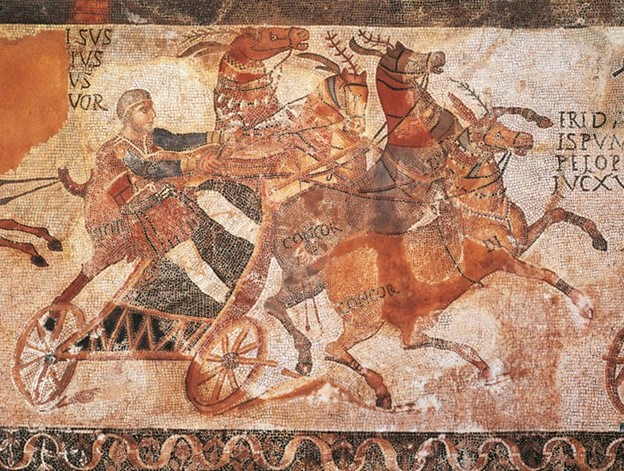
The rider is a charioteer directing three stallions:
- The Promise-Keeper
- The Stallion of the Past.
- If the Promise-Keeper is your dominant Stallion, you get things done if you make promises.
- Scheduling to-dos in advance works for you, so you are freed from having to choose what to do at the moment. GTD probably works for you.
- You often don’t notice brewing rebellion from your Stallions.
- The Freedom-Fighter
- The Stallion of the Present.
- If the Freedom-Fighter dominates, you need to choose to-dos at the moment.
- Freedom is sacred to you. You rebel against anything that feels like an imposition from your past or future selves, or from other people.
- You’ll do tasks as long as you know you are free not to do them.
- The Vision-Chaser
- The Stallion of the Future.
- If the Vision-Chaser dominates, you see the past and the present simply as pathways to the destination: the future.
- You are fueled by your vision of the future. You sacrifice today for tomorrow.
- To you, it is pointless to do tasks that don’t bring you closer to your vision.
I visualize these three as white, black and brown stallions.
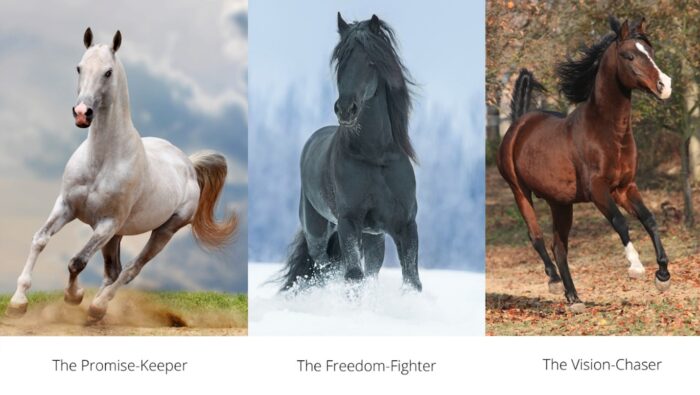
GTD is designed for the White Stallion
Let’s use the language of Three Stallions to answer our question: why doesn’t GTD work for me and for other people?
GTD’s emphasis on capturing and processing tasks is a relief to the White Stallion. It allows the remembering and the keeping of promises.
Capturing and processing tasks feels like a form of slavery to the Black Stallion, and if they are not pathways to its envisioned future, they are a nuisance to the Brown Stallion.
The lists created through GTD frees the White Stallion from having to choose what to do at the moment. These same lists feel constricting to the Black Stallion.
This sounds analogous to the difference between extroverts and introverts. Social interaction energizes the extrovert and drains the introvert. Choosing what to do in a work session, at the moment of work, is inefficient to the White Stallion. Why not just do what you already planned? Choosing energizes the Black Stallion. It is a celebration of freedom.
Day-to-day usage of the Three Stallions for motivation
The Three Stallions is not another way to classify ourselves or other people. It is more of a checklist for motivation, because all of us have all three stallions:
- We want to be faithful to our commitments
- We want to be free
- We want to get to the future we envision
When designing our productivity system, we want to address the three, particularly the Stallion that dominates in us.
The same checklist can be useful for motivating our teammates.
Designing a productivity system for the Black Stallion and the Brown Stallion
What would be our design requirements for a productivity system for people who are fueled by their vision of the future and by the need to choose at the moment?
- Each task must contribute to a project that brings you closer to your vision
- It must give you the freedom to choose a task at the moment of work
Project-driven Stallion/Rider Productivity meets these design requirements.
—

